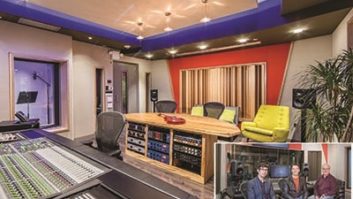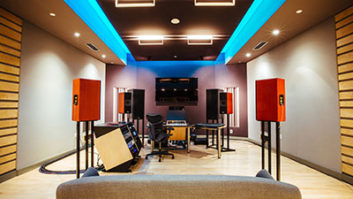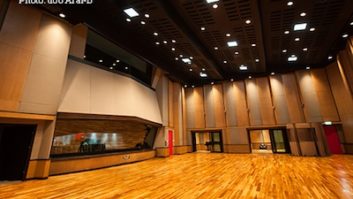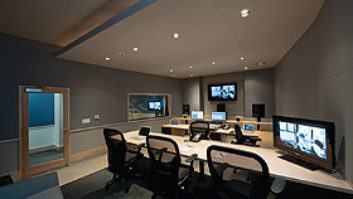
No matter what way you look at it—from the past three years in development, the upcoming October 24 launch, or the future of a complete pro audio product performance database—the creation of Audio Test Kitchen is a massive undertaking. The sheer number of products to test seems daunting; the fact that each product category requires its own meticulous methodology and measurement criteria adds complexity; and the core mission to build a user base founded on trust and the absolute rejection of bias takes time.
Audio Test Kitchen isn’t simply an online directory of audio products with media and specs attached. It’s a search-and-compare tool for the pro audio industry, based loosely on the mission of Consumer Reports: Deliver reliable, complete, measured and relevant information that the customer needs, and let them make the choice that’s right for them. But instead of green check marks on full pages of magazines, the user gets standardized, personality-revealing audio files to compare, in this case, one Large Diaphragm Condenser Microphone against another—along with frequency response graphs, videos, multiple sources across multiple genres, testimonials, Share functions, A/B comparison tools, Spotify examples from hit songs, and other features that might contribute to a buying decision.
“As a recording engineer and producer with sales, marketing and product design and development experience, I kept coming back to this one pain point,” says Alex Oana, founder of Audio Test Kitchen. “Most pro audio sales are Internet, email and phone based. It doesn’t matter where people are trying to get their information, it matters that they’re getting reliable information. That information may be out there, but it’s in a scattershot way and it varies widely in its reliability. The customer simply wants to know, ‘What’s the best gear for me?’ Every individual compares products individually, according to their needs and their way of working.”
“Audio Test Kitchen is actually a better-than-showroom experience because it empowers you to make these critical comparisons in your listening environment which you know best,” adds co-founder Ian Hlatky, a producer/musician who originally hails from Vermont, moved to L.A. to work under producer Kim Fowley, relocated to Colorado, built a recording studio and made records, attended law school, and finally returned to L.A. to practice law as a start-up and venture capital attorney. “Audio Test Kitchen meets people where they are: Some want the science, some want the blind A/B test, some want to hear the gear in examples of released songs on Spotify. Salespeople, friends and industry icons can be a wealth of knowledge, but as Alex is fond of saying, they don’t have your ears.”

Nearly three years ago, Oana came up with the bones of the idea. He started talking to a small circle of trusted friends and colleagues, and they encouraged him. Through mutual friend producer manager Jerimaya Grabher, he was introduced to Hlatky, and within half an hour, the two were in business. Over the next two years they worked on the functionality and user interface, getting feedback from advisers Tony Maserati, Phil Wagner, Jeff Ehrenberg from Vintage King L.A. (now chief sales officer) and engineers James “Fluff” Harley and Jesse Ray Ernster. But it would still be a long time before they entered a studio to record with the mics. First they had to get the mics.
“The key to making this all work was the relationships we developed with all the manufacturers early on,” Oana says. “We had a clickable prototype on the Web doing everything but the audio, and we walked them through the features and the recording methodology. We went to their offices, we went to NAMM, and the industry ended up getting excited and participating.”

“Man, it would have been really hard to do it without the manufacturers’ support,” adds Hlatky. “But it was more than just getting access to their products; we wanted to substantively engage with them. What are the processes they use? What do they consider important in measurement? We designed the platform with them in mind, the same as we designed it with the user in mind. It’s that perfect combination of science and art that forms the core of our industry.”
The final step of the process was going into the studio and lining up the mics. First stop was EastWest for piano, guitar and bass recording. Vocals were captured and reamplified in Harman’s anechoic chambers through ADAM and ATC monitors to get apples-to-apples comparisons using the human voice. Later they went to Chris Lord-Alge’s Can-Am Studio A, Gold Diggers, and Plastic Dog Studios.
At each step, tweeters and capsules were lined up by lasers, distances of instrument to mic were absolutely equal, and the same signal chain was employed: from XYZ mic to Accusound MX4 microphone cable > Grace m108 microphone preamp with Grace m108 analog to digital converter, 24-bit, 96k > Focusrite Red 4Pre Dante Thunderbolt interface > Pro Tools Ultimate, 32-bit file recording, 96k.
Along the way they also did vocals and some acoustic guitar up at JBL’s Northridge, Calif., headquarters, where they had access to a variety of anechoic chambers and the expertise of Harman researchers Dr. Sean Olive, Todd Welti and Omid Khonsaripour. They also were able to capture a catalog of frequency response graphs.
In late summer, with recordings in hand and UI fixes complete, Audio Test Kitchen released the product to a limited group of beta users. On October 24, the partner launch takes place, co-promoted by the participating manufacturers, and the rest of the world will chime in.

There are still plenty of questions to be answered, including the right revenue model to ensure the best, most accessible resource, what happens when a participating manufacturer disputes their findings, and even what will be the next product category. That’s all coming, and with the platform in place, Oana and Hlatky can start adding products at a much greater pace. The goal of entering the MI market is on the near horizon.
“This is just the beginning,” Hlatky says. “It’s the first step of what we hope is a new approach to how people can have the conversation about audio gear.”







